IT was foggy over New York City the morning of July 28, 1945.
All that was visible to the flight controllers at La Guardia Airport was the spire atop the 443-metre Empire State Building — at the time the tallest building in the world — poking through the gloom.
A few kilometres from the skyscraper, Lt. Colonel William Smith was piloting a U.S. Army B-25 bomber to Newark Airport.
All appeared normal, but unbeknown to Smith and his fellow crew members, they were dangerously off course.
Instead of skirting to the north of downtown Manhattan, he was flying right over the area with more skyscrapers than any other place on Earth.
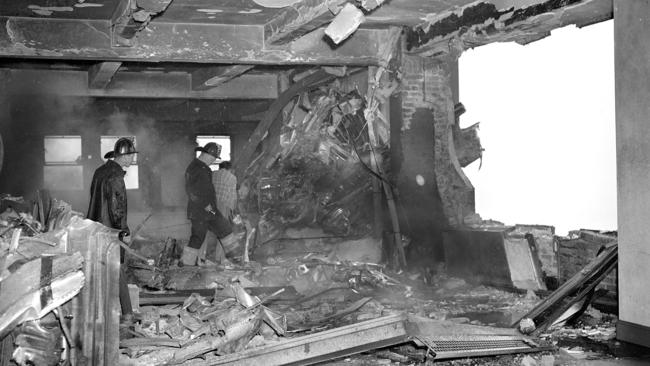
Disoriented and dodging the skyscrapers of Manhattan, Smith saw the top of the Empire State Building — through the windshield.
Roaring along at 320km/h, the plane slammed into the 78th and 79th floors, gouging a massive hole 278 metres above 34th Street.
Fourteen people died in the crash and the fire that followed: Colonel Smith and the two others in the plane, and 11 in what was then the world’s tallest building.
The death toll could have been far worse. It was a Saturday and the building was relatively empty, as were the streets below.
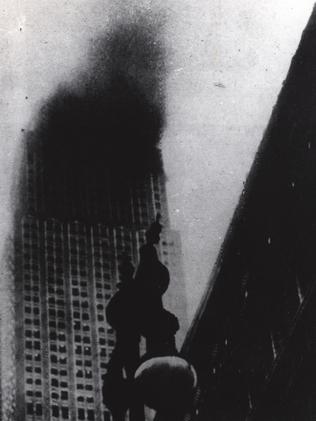
When the bomber hit, the plane’s high-octane fuel exploded, hurtling flames down the side of the building and inside through hallways and stairwells all the way down to the 75th floor.
“It was as if a bomb went off,” The New York Times quoted Albert Fuller, who was shopping in the B. Altman department store, diagonally across from the Empire State Building, as saying.
“The floor moved. I looked at the clerk and said, ‘Isn’t that strange?’ And I thought, it couldn’t be an earthquake.”
Gloria Pall worked for the United Service Organisation’s headquarters on the 56th floor.
“I was at the file cabinet and all of a sudden the building felt like it was just going to topple over,” she said.
“It threw me across the room, and I landed against the wall. People were screaming and looking at each other. We didn’t know what to do. We didn’t know if it was a bomb or what happened. It was terrifying.”
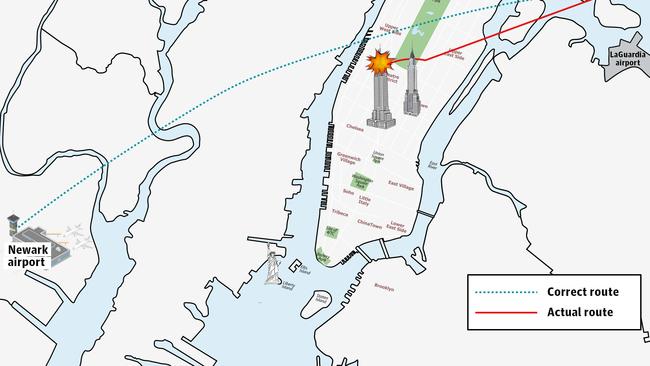
The force of the impact sent one of the plane’s 930-kilogram Twin Cyclone engines through seven interior walls and out the southside of the building, where it landed on top of an adjacent penthouse.
An elevator plunged 68 floors. Incredibly the two people trapped inside were not killed.
Glass from the Empire State Building’s hundreds of windows shattered and showered those on the street below.
Fire crews had a seemingly hopeless task.
They were forced to carry their hoses from the 67th floor to the fires raging out of control 11 floors above.
Most of the victims were burned beyond recognition.
Airman Smith’s body was not found for two days. His body had gone through an elevator shaft and fallen to the bottom.
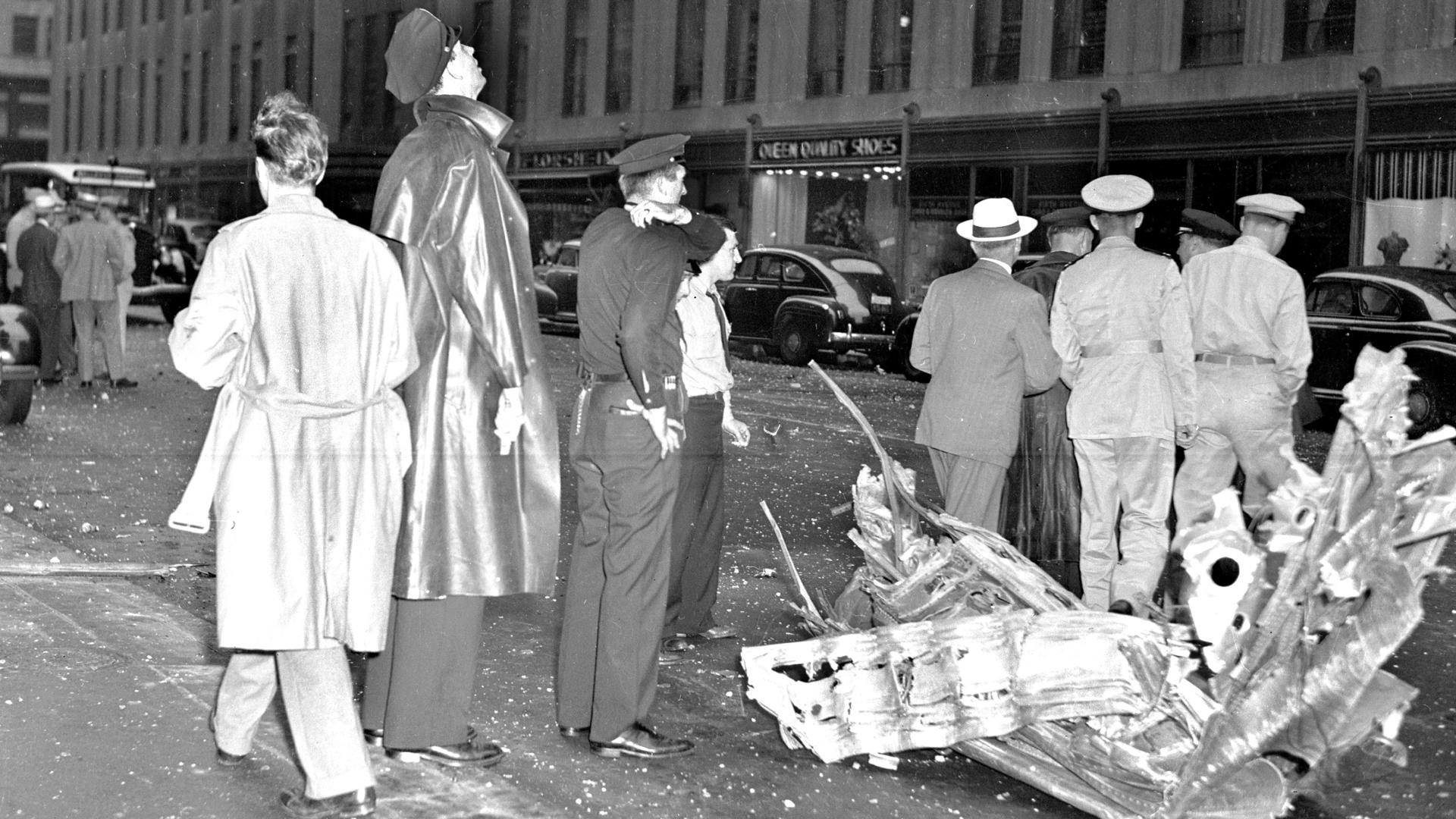
Betty Lou Oliver was luckier. The elevator operator was burned when the bomber hit the building.
Rescuers decided to take her from the scene using an elevator. What they didn’t know was that the safety cables had been weakened by the crash and snapped - sending the car and Miss Oliver hurtling 75 floors.
She should have died but, miraculously, survived. Her fall still stands as the longest elevator fall by an individual who survived, according to the Guinness Book of World Records.
“I don’t think any one of us had any idea of what had happened,” Therese Fortier Willig, a secretary in the Catholic War Relief office on the 79th floor, told The New York Times.
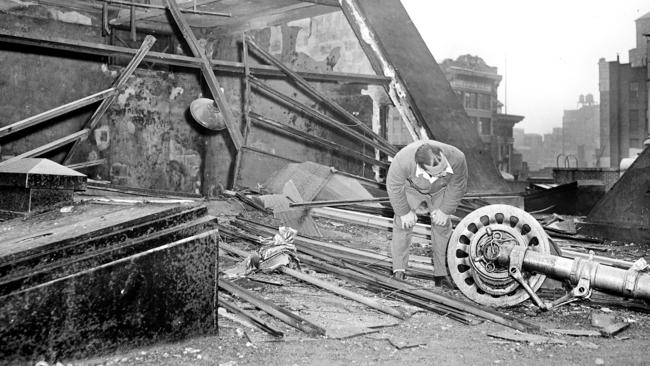
“Who’d have thought a plane? We were used to having clouds come in the windows up there. The building wasn’t air-conditioned, and the first time I went in there, I was all agog because here were these little wisps of clouds drifting in the window.”words
A government investigation found that Smith, an experienced airman who had flown combat missions in Europe, “erred in judgment when he elected to fly over Manhattan in weather conditions which prevailed at the time” and that he should not have been cleared to proceed to Newark.

Here’s what you can expect with tomorrow’s Parramatta weather
As summer moves towards autumn what can locals expect tomorrow? We have the latest word from the Weather Bureau.
Here’s what you can expect with tomorrow’s Parramatta weather
As summer moves towards autumn what can locals expect tomorrow? We have the latest word from the Weather Bureau.